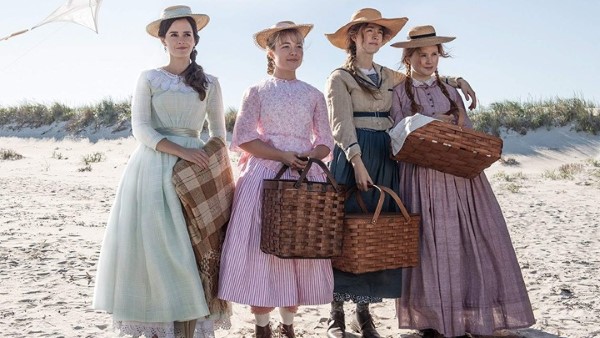
There’s something marvelous about Greta Gerwig and her filmmaking. The wonderful actor-turned-director’s easygoing, innocent style is perfect for the latest adaptation of Little Women, the pioneering, iconic coming-of-age story penned by Louisa May Alcott. This film is lovely, free-spirited, beautiful, and, of course, fun. This story could not have been put in better hands. Greta’s directorial debut and titanically successful Lady Bird may have enabled her the opportunity to helm this film, but the idea was in her head long before her 2017 breakout hit. (She wrote the first draft of this script before directing Lady Bird.)
Little Women is the fifth (ish, but who’s really counting) adaptation of the classic Alcott novel. The story follows the March sisters—Jo, Meg, Amy and Beth—as they come of age in Civil War-era America. Their struggles to be independent in a sexist economic and societal system are conveyed with a wonderful combination of chaos and meticulousness by Gerwig. The film features a non-linear style with two separate storylines, one set during the Civil War, seven years earlier than the latter. This side-by-side allows the viewer to see two separate portraits of each of the March sisters: one where they are discovering themselves and who they want to become, the other after they’ve (mostly) molded into what their lives will be. While some have complained that the editing between these storylines was muddy and hard-to-follow, I felt Greta did a marvelous job balancing them thanks to her subtle and clever use of lighting. The earlier storyline was shot entirely with warm lighting, while the “present day” storyline was shot entirely with cold lighting. The earlier felt more vibrant, child-like and innocent, while the “present day” storyline felt more industrial, flawed, grown-up and realistic.
That said, the strength of Little Women is in the characters themselves. Each of the March sisters have their own unique set of qualities that Gerwig explores with a carefree, spontaneous sense of self-discovery. At the helm is the chaotic and disorganized yet fiercely independent Jo. Portrayed by Saoirse Ronan, there is a palpable fire to her character, both thanks to the strong writing and to Ronan herself. There’s Meg, played by Emma Watson, who is the closest thing to a traditional feminine character this story has to offer, but even she is unconventional. She is kind and patient, the elder of the group, and becomes a metaphor for the manifestation of true love while still offering wisdom and guidance for the rest of the sisters. There’s Beth, quiet and reserved, played in a down-to-earth way by Eliza Scanlen and a welcome contradiction to the rest of the sisters. And finally, there’s Amy. Her struggle for social acceptance, combined with her unquenchable ambition, was the most relatable for me and my favorite of the sisters. Florence Pugh’s performance was the most impressive of the group.
The supporting characters are also incredibly strong, but the highlight is definitely Laurie. Timothée Chalamet strips away his “bad boy” persona for this grounded yet romantic and innocently kind take on the boy next door. He is a romantic, searching for his one true love, but also willing to step aside and do what’s best for others around him. Laurie is the embodiment of how men should act around the women they love.
It is incredibly rare for a 134-minute film to have this many developed characters, but the strength of the source material, combined with Gerwig’s penmanship, make each character I just mentioned feel unique and thorough. Gerwig’s amazing use of stacked dialogue really hammers this point home. Each scene in the tumultuous March home gives the viewer a fascinating insight into each sister and their mother.
This movie is a surefire classic, absolutely the pick-me-up film you need this holiday season, and a triumph for its filmmaker, firmly establishing Gerwig in the upper echelon of the Hollywood elite.













